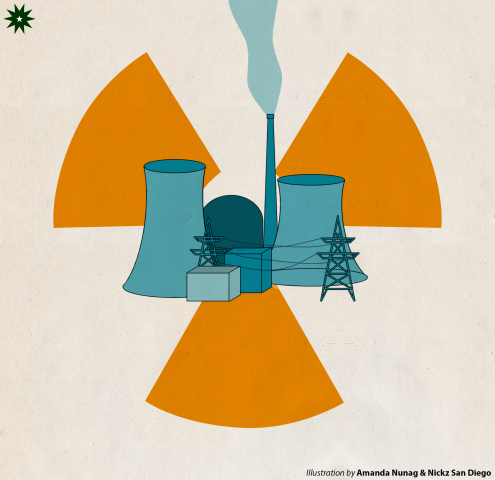The 1986 Chernobyl reactor explosion left its tragic mark by killing more than 30 individuals in the initial explosion and contaminating the surrounding areas with high radiation. Other notable events—such as the Manhattan Project, the bombing of Hiroshima city, as well as another accident in Fukushima—have further aggravated resistance toward the use of nuclear energy.
Though a rare blip in history, these disasters generated devastating effects on a large scale, fueling persistent qualms about nuclear power, especially revolving around radiation exposure and purported health-threatening hazards.
The birth of nuclear power
Born out of World War II, humanity realized that massive amounts of energy within the atom can be harnessed and manipulated. Nuclear energy was seen as the next big thing that would ultimately propel humanity to greater heights in terms of achievement and discovery.
Nuclear plants can provide much more power compared to that produced from fossil fuels. It was in the Soviet Union on January 27, 1954 where the first nuclear power plant was built. Over the years, the number of nuclear power plants have been steadily increasing up to this day.
However, the use of nuclear energy has not grown exponentially as Cold War-era experts thought. As of 2019, nuclear energy only provides around 11 percent of the world’s power. While there are political and economic reasons for this lackluster growth, one main reason as to why nuclear energy has a slow growth is public perception.
Practicality versus perceptions
There have been numerous arguments for and against the use of nuclear energy. From the Cold War era to the present, these reasons have stayed the same. The first advantage of nuclear power is energy density, which is evident as a kilogram of uranium can provide much more power compared to a kilogram of coal. Additionally, nuclear power plants do not emit greenhouse gases that trap heat in the atmosphere. Shifting toward nuclear energy may be an important consideration in reducing carbon emissions—which, according to recent United Nations reports, are at an all-time high and remain on the upsurge—and slowing down the domino effects of global warming, melting ice, rising sea levels, and disrupted ecosystems.
The nuclear industry offers several job options, employing not just engineers and scientists or the technical professions, but also skilled laborers including reactor operators, welders, and carpenters. In an interview with The LaSallian, Dr. Joseph Auresenia of the Chemical Engineering Department also points out that the top 10 economic countries utilize nuclear power.

However, it is known that the use of nuclear energy comes with the production of radioactive waste. This waste must be contained safely to prevent leakage into the environment as radioactive waste remains hazardous for decades. The Marshall islands—testing grounds for radioactive weaponry from six decades ago—still currently have external gamma radiation levels surpassing the exposure limits of 50 millisieverts (mSv) annually or 100 mSv over five years.
There is also a common misconception that nuclear power plants can explode similar to an atom or hydrogen bomb. This is impossible. In order to create a bomb, the fuel must be enriched first and uranium in power plants is usually only three to five percent enriched. This means that the reaction proceeds very slowly compared to a bomb. Moreover, reactors in power plants are built with control rods, which further slow down the reaction.
Excessive exposure to ionizing radiation can lead to severe health complications like organ dysfunction and some cancers, including leukemia and thyroid cancer. However, studies found that power plant staff who accumulated trace amounts of radiation exposure daily still remained below the cited maximum allowable dose per year. This is because strict standards and regulations have already been put in place for the protection of nuclear workers.
“There are inherent dangers, but [power plants are] designed such that [they] could be operated safely,” discusses Auresenia, noting the 40-year gap between the Chernobyl and Fukushima events. As long as the established safety measures are meticulously followed and no accidents occur, occupational hazards in the nuclear industry are no more significant than the health risks associated with other jobs.
The only way forward
Nuclear energy may be “the only choice we have” when fossil fuel resources run out, but implementation in the country is easier said than done. According to Auresenia, the Bataan power plant might have been pursued if not for the Chernobyl incident happening the same year it was set to begin operations, and the Fukushima event occurring just as the Bataan plant’s reopening was being considered in 2011.
In the face of these hindrances, Auresenia notes the importance of continued research and monitoring, “Each accident is heavily studied so we can learn from them and implement better safety regulations.”
Auresenia further emphasizes that there is a need to train local manpower—to establish a body of Filipino nuclear engineers and scientists with the capacity to properly operate nuclear power plants and respond to repercussions should
they arise.
